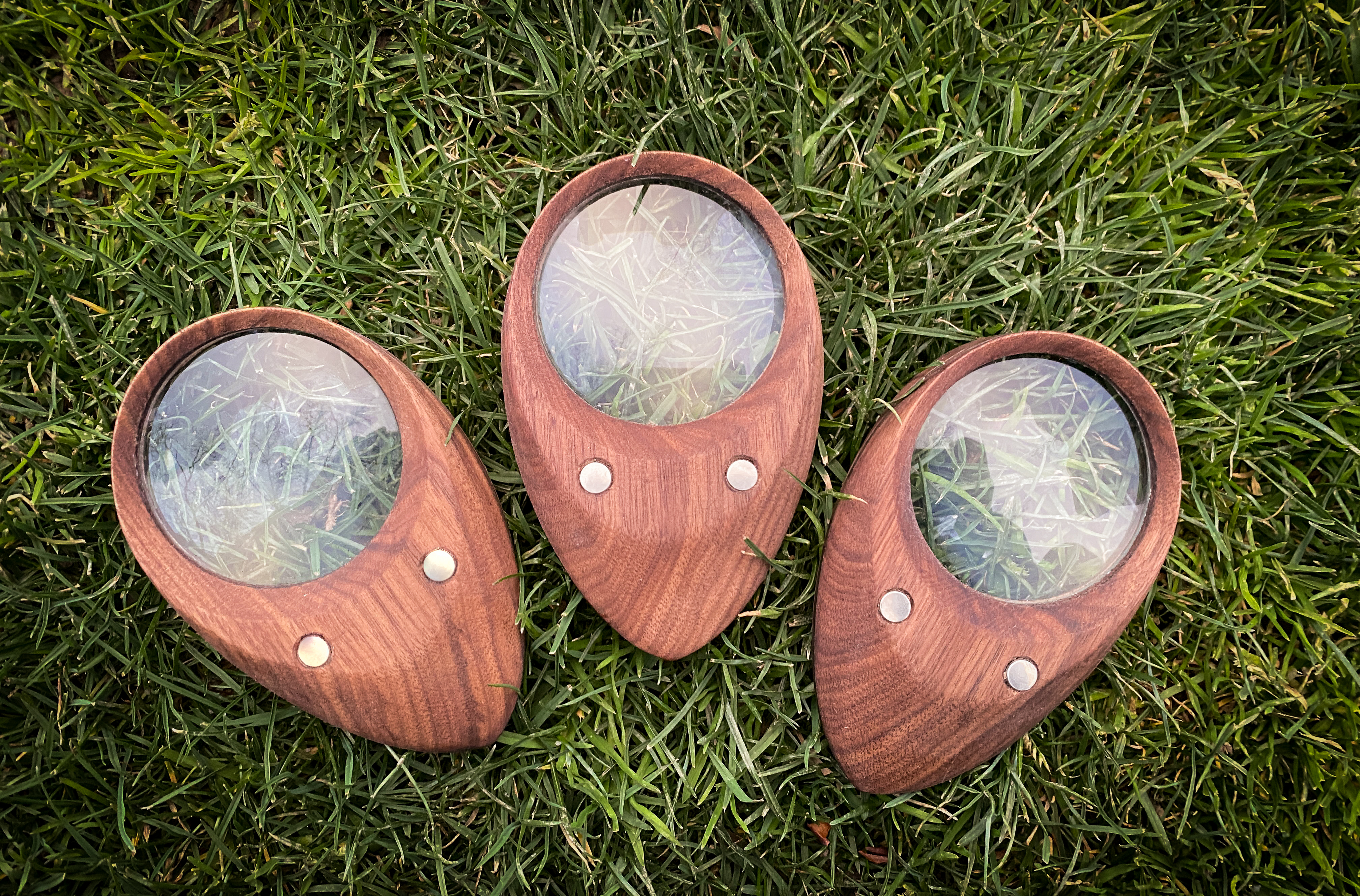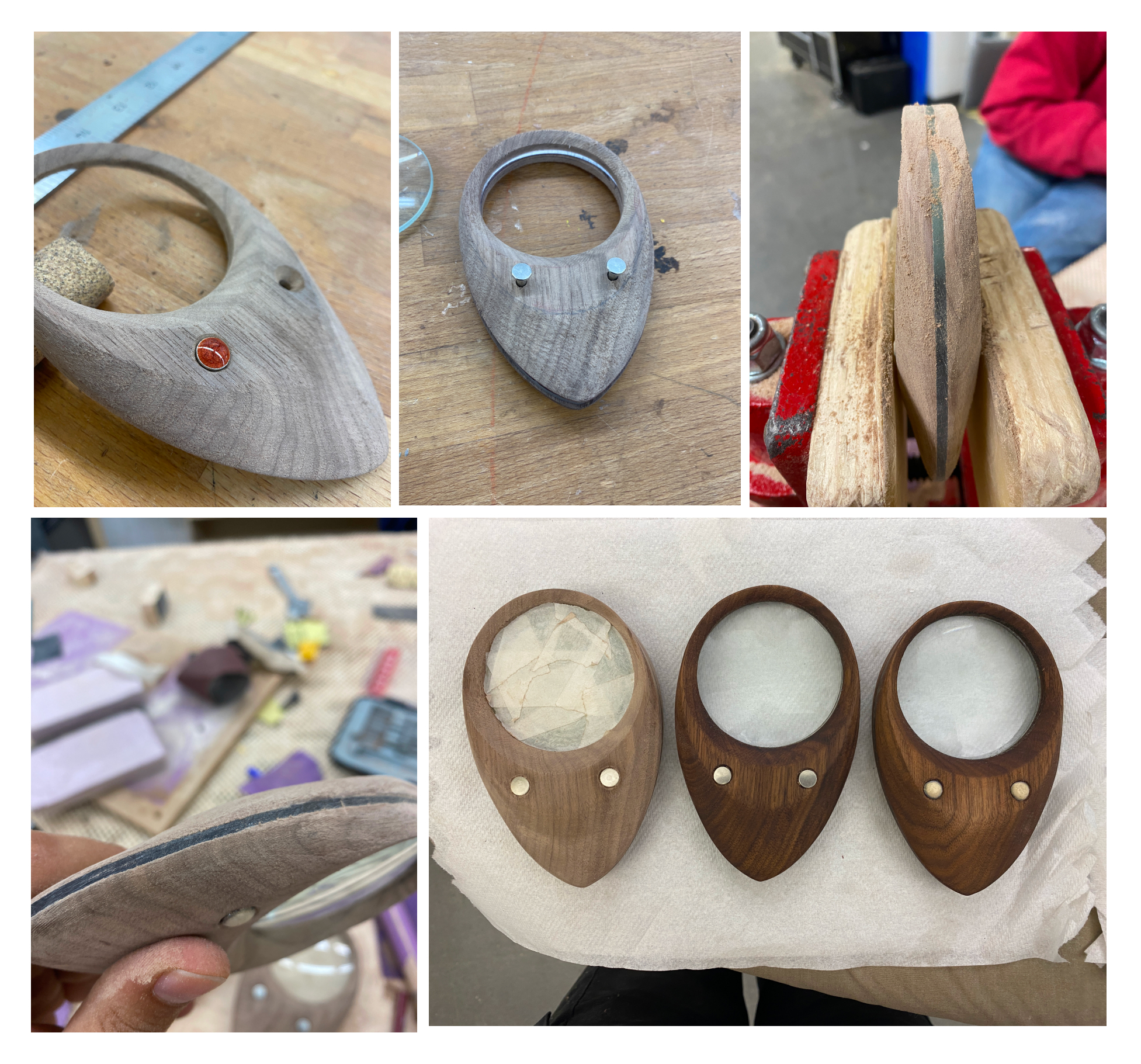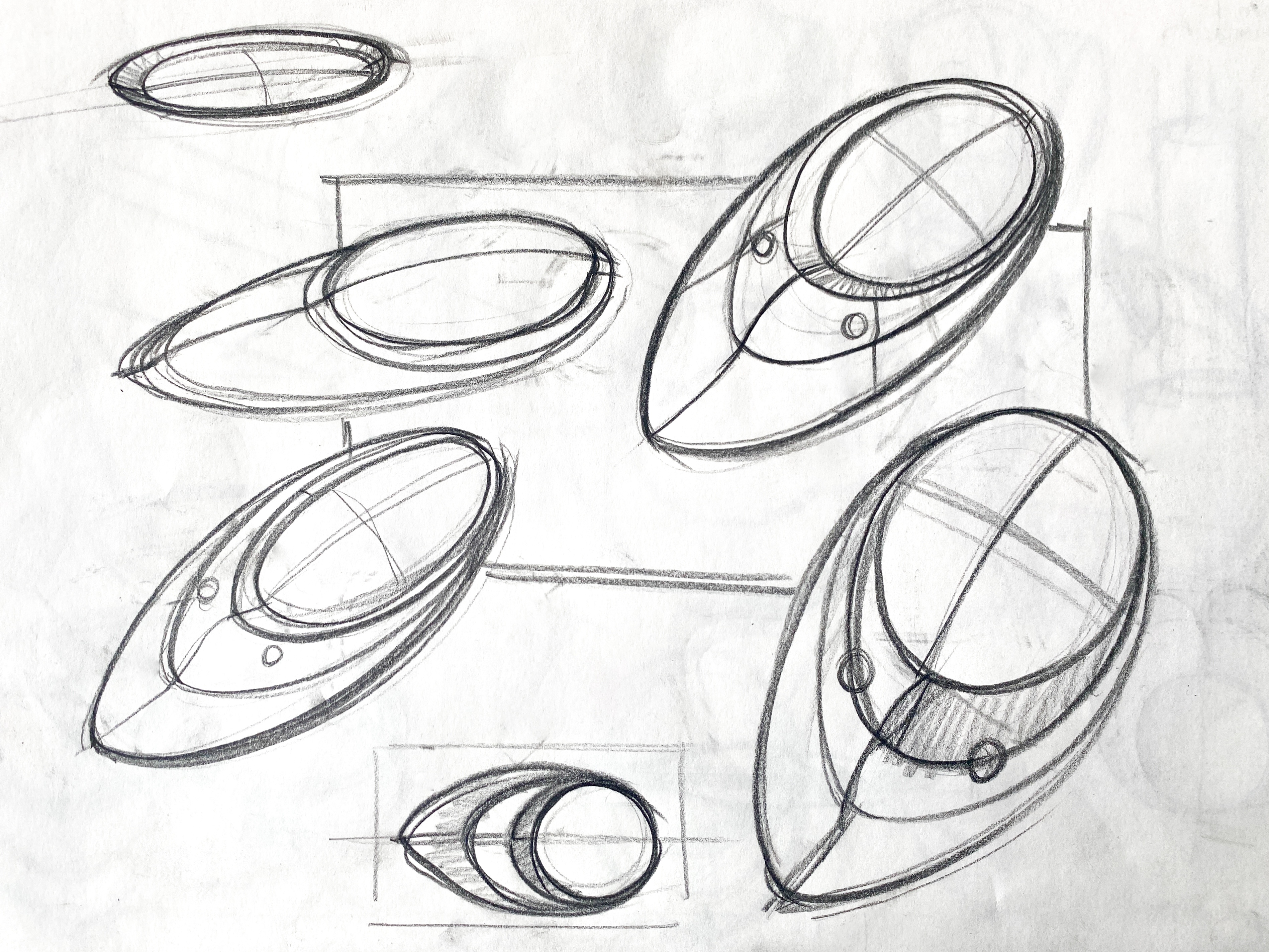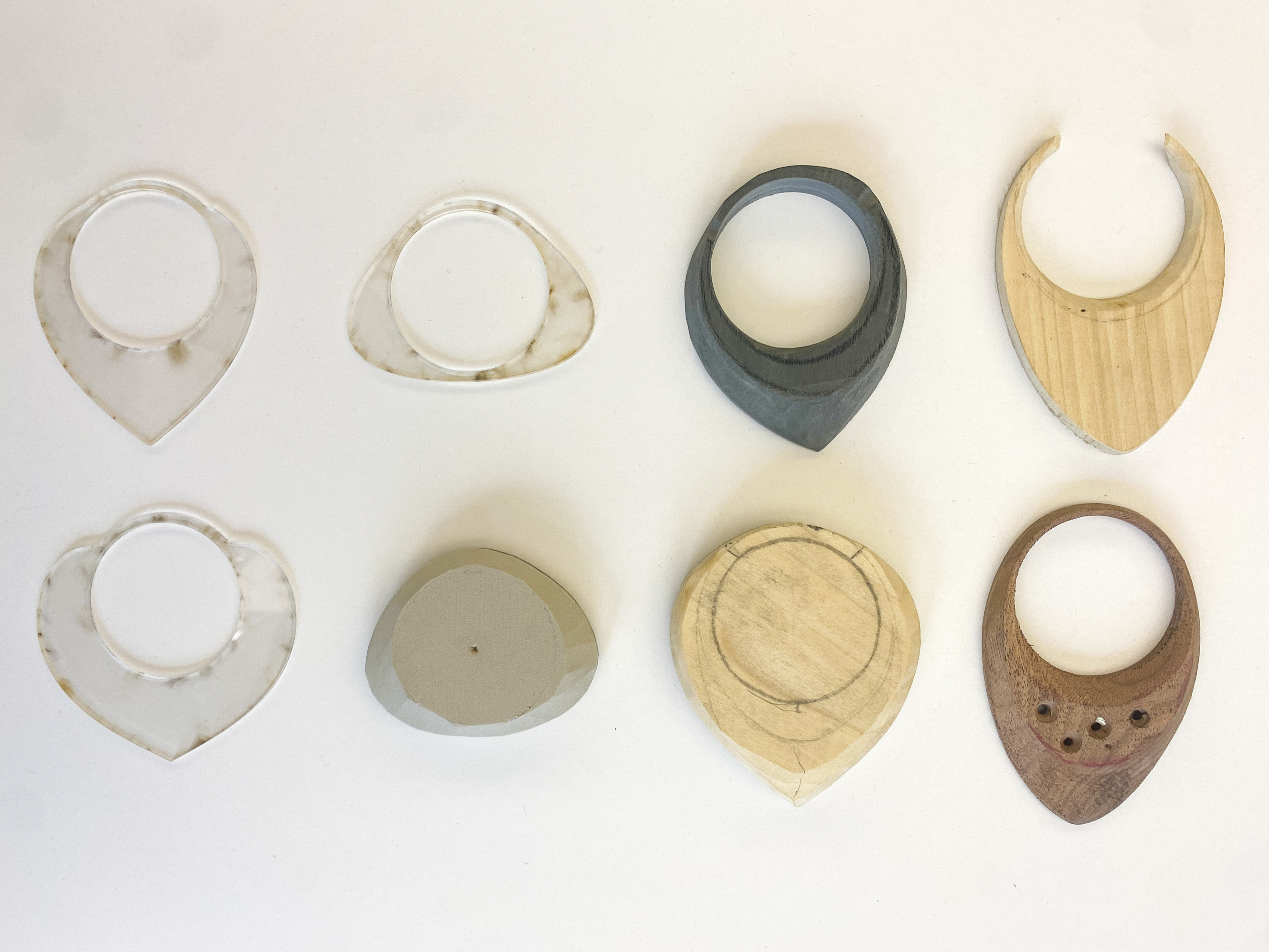
Stolas Magnifying Glass,
Polytemporal Objects
Crafting forever- objects that connect deeply with people and are cherished across multiple generations. Three were made: one to be donated to an auction, one gifted and one kept.
Course: Experimental Form
Materials: Walnut, Polycarbonate, Silver-Nickel Rivets, Epoxy, Turpentine Oil, Magnifying Glass.
Tools: Laser-Cutter, Jointer, Planer, Vertical Bandsaw, Oscillating Spindle Sander, Drill Press, Belt Sander, Rasps and Sandpaper
Course: Experimental Form
Materials: Walnut, Polycarbonate, Silver-Nickel Rivets, Epoxy, Turpentine Oil, Magnifying Glass.
Tools: Laser-Cutter, Jointer, Planer, Vertical Bandsaw, Oscillating Spindle Sander, Drill Press, Belt Sander, Rasps and Sandpaper
A magnifying glass is an object many come across at certain points during childhood, but aren’t typically kept around or taken care of for long. I wanted to look into behaviors magnifying glasses inherently encourage, and consider the connection one makes with their tool.
From a more zoomed out perspective, it was influencial to think about the lives materials we interact with daily have lived. The wood of a table a family eats dinner at every day lived a life before it became a table, and will likely hopefully continue to. How can objects be thought about as entities whose lives we enter as opposed to ownership and the object entering ours? There is value in designing and crafting objects that create bonds with people, and are cherished across generations.
From a more zoomed out perspective, it was influencial to think about the lives materials we interact with daily have lived. The wood of a table a family eats dinner at every day lived a life before it became a table, and will likely hopefully continue to. How can objects be thought about as entities whose lives we enter as opposed to ownership and the object entering ours? There is value in designing and crafting objects that create bonds with people, and are cherished across generations.





Stolas, also referred to as the Tortoise Beetle, is the inspiration for the form of the wooden handle and inspired the beginning idea of a magnifying glass—to take a closer look at the creatures we share the planet with. They are indigenous to Brazil and are a small but mighty invasive species in the area.





These three objects were made from a roughly 2x 2x 4in scrap piece of walnut. To maximize the material I could use, I rip cut through the thickness of the material to fit six halves of the handles.
From finding the perfect forstener bit to match the magnifying glasses I had, to ensuring I was planning for the final alignment of the three slices from the very start, the making process involved a lot of trial and error, and thougtful considerations to next steps.
3D printed jigs were incredibly useful in ensuring delicate sections of the piece had support during sanding.
Narrowing down the concept
During the beginning phases of this project, I started with thinking about the traditional handle that tends to accompany magnifying glasses. While functional and efficient, the thinner, longer handle leaves room for only one hand to connect with the object and enourages more distance to form between the person and the tool.
A wider, more flared out design, with subtle appropriate affordances such as a divot around the glass, allows for a much more intimate interaction.
Another consideration was mechanisms. The shelter of the glass within a shell like feature, just like a beetle protects itself with a hard exterior was a very interesting, but risky route. The risk of it not working in a smooth way, and the larger form moving pieces would create, detering from it being easily hand-able was why I decided to not pursue that route.
During the beginning phases of this project, I started with thinking about the traditional handle that tends to accompany magnifying glasses. While functional and efficient, the thinner, longer handle leaves room for only one hand to connect with the object and enourages more distance to form between the person and the tool.
A wider, more flared out design, with subtle appropriate affordances such as a divot around the glass, allows for a much more intimate interaction.
Another consideration was mechanisms. The shelter of the glass within a shell like feature, just like a beetle protects itself with a hard exterior was a very interesting, but risky route. The risk of it not working in a smooth way, and the larger form moving pieces would create, detering from it being easily hand-able was why I decided to not pursue that route.







